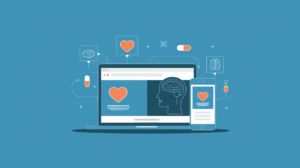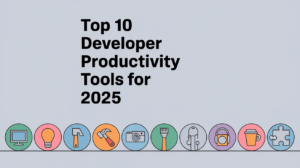You only have a few seconds to make an impression online. Visitors come and go rapidly, and if nothing grabs their attention, they leave just as quickly. While design is crucial, website animations adds that extra flair to keep users engaged and returning.
Incorporating animations brings your site to life, guiding users smoothly from one page to the next through interactive elements. If you’re feeling creatively stuck, this article will inspire you with amazing web animations that you simply can’t miss!
Understanding Animation in Web Design
Animations transform a website from a static collection of pages into a lively story by adding motion to various elements. This magical touch brings graphics, text, and images to life, creating an engaging and dynamic user experience. From subtle hover effects highlighting buttons to full-page transitions, animations make your platform more interesting to explore.
Types of Website Animations
To turn your website into an interactive narrative, explore a diverse range of animation styles and techniques. These visual treats capture user attention while creatively conveying information. Here are some top types of website animations that are essential for modern web design:
1. Loading Animations
Loading animations are the first point of interaction users have with your website. More than just a spinning wheel or progress bar, they can be creatively designed to keep viewers engaged while they wait.
They serve a practical purpose by signaling that the site is functioning and content is on its way. For example, incorporating your brand’s style or a touch of humor can turn a brief wait into an opportunity to connect and impress.
2. Welcoming Animations
Welcoming animations are your website’s friendly handshake, introducing users to your brand with a delightful visual. Whether it’s a playful character, a creative visual unfolding your story, or an elegant logo display, these animations make a memorable first impression and captivate users instantly.
Engage Your Audience – See how we can create custom animations that captivate and retain your audience’s attention.
3. Hover Animations
Hover animations add interactivity, making your website fun to explore. They occur when users hover over elements like buttons, links, or images, adding a playful touch that encourages clicks and discovery. These animations not only enhance aesthetics but also improve usability by clarifying clickable elements.
4. Scrolling Animations
Scrolling animations bring a dynamic twist to the user experience. As visitors scroll down your page, animations activate, making content pop and come to life. These animations break down content into digestible chunks, guiding users smoothly through your site.
5. Navigation Animations
Navigation animations transform simple clicks into smooth experiences. They guide users from one part of your site to another with elegance, reducing confusion and creating a natural flow. These animations enhance the overall user journey, making navigation intuitive and enjoyable.
6. Dynamic Menus
Dynamic menus add an interactive and responsive element to your website’s navigation. They adapt based on user interaction, making it easier and more enjoyable to find information. Examples include menus that expand with animated options or reorganize based on the user’s journey.
7. Image Galleries
Image galleries showcase visuals in an engaging way. With animations, a simple series of photos can become a visual journey, with images gliding across the screen or popping up and expanding. These animations draw users in, making them eager to explore your visual content.
8. Accent Animations
Accent animations are subtle touches that add personality to your website. These include pulsing buttons, small graphics activating on hover, or text moving slightly as you scroll. They enhance the overall feel of your website without overwhelming it, adding charm and sophistication.
Transform Your Online Presence – Let us help you stand out with visually stunning and technically flawless web animations.
9. Skeleton Screens
Skeleton screens keep users engaged during loading times by showing a bare-bones outline of the content to come. They provide a sense of progress and anticipation, reducing frustration and bounce rates caused by longer load times.
10. Visual Feedback
Visual feedback animations communicate with users by acknowledging their actions, such as form submissions or button clicks. They range from simple color changes to complex sequences that confirm actions or guide users to the next step, enhancing user interaction and experience.
11. Dynamic Backgrounds
Dynamic backgrounds add depth and motion to your website, creating an immersive atmosphere. These can range from subtle animations to complex scenes, setting the mood and tone of your website without distracting from the main content.
12. Whole Page Motion
Whole page motion involves moving entire pages or large sections, creating a striking visual impact. This type of animation captivates users with its bold approach, making it ideal for storytelling, product showcases, or creating an emotional connection with your audience.
13. Storytelling Animations
Storytelling animations weave together visuals, motion, and text to tell your brand’s story compellingly. These animations connect with users emotionally, turning facts into a relatable narrative. Examples include animated timelines, character-led journeys, or animated infographics.
The Best Tools for Website Animation
When crafting animations for your website, the right tools are essential. Whether you’re adding a subtle hover effect or a complex animated sequence, these tools can help unleash your creativity:
- JavaScript Libraries JavaScript libraries like GreenSock Animation Platform (GSAP), Three.js, and Anime.js offer powerful options for creating smooth, interactive animations. These libraries provide flexibility and control for custom animations that enhance user interaction.
- Website Builders Without Coding Website builders like Wix, Squarespace, and Webflow allow you to create animations without coding. These platforms offer pre-designed animation options that can be customized easily, making animation accessible to beginners.
- 3D Animation Tools Tools like Blender, Maya, and Cinema 4D enable the creation of stunning 3D models and animations. These tools offer unparalleled visual depth and engagement, transforming your website into an immersive experience.
Technologies for Creating Web Animation
Understanding the technologies behind web animation is crucial for creating dynamic visuals. Here are some key technologies:
- CSS CSS allows you to animate webpage elements with ease, from hover effects to keyframe animations. It’s ideal for lightweight, browser-friendly animations.
- JavaScript JavaScript provides a higher level of interactivity, enabling animations that respond to user actions. Libraries like GSAP and Three.js expand their capabilities for complex animations.
- SVG SVG offers crisp, scalable animations ideal for responsive design. Using CSS and JavaScript, you can create dynamic effects for detailed graphical work.
- Canvas The HTML5 Canvas element is perfect for intricate, interactive animations, offering a vast playground for creativity and control.
- WebGL WebGL enables the rendering of interactive 3D and 2D graphics, ideal for detailed and immersive animations. It leverages users’ graphics cards for smooth performance.
Conclusion
Web animation offers limitless possibilities to enhance user experience and engagement. By leveraging the right tools and technologies, you can create a website that stands out. At 42Works, we specialize in creating dynamic, animated websites that captivate audiences and drive engagement.
So, if you are looking for website design services, remember that with the right tools, a dash of creativity, and a little help from experts at 42Works, you can create a website that truly stands out in the digital crowd.
Have a project in mind? Let’s communicate! Get expert estimation.
FAQs
1. Why is animation important in web design?
Animation in web design is crucial because it enhances user engagement and interaction. It transforms a static webpage into a dynamic and immersive experience, guiding users through the site and highlighting important content.
2. What are some common types of website animations?
Common types of website animations include loading animations, welcoming animations, hover animations, scrolling animations, navigation animations, and dynamic menus.
3. What are the benefits of using animations on a website?
Benefits include increased engagement, enhanced user experience, better storytelling, highlighting important content, and improved aesthetics.
4. Are there any downsides to using animations on a website?
Potential downsides are performance impact, accessibility issues, and the risk of overuse which can overwhelm users.
5. How can I ensure that animations on my website are effective and not overwhelming?
Ensure animations are subtle, optimized for performance, accessible, aligned with brand identity, and tested for user reactions.
6. What tools can I use to create website animations?
Tools include JavaScript libraries (GSAP, Three.js, Anime.js), website builders (Wix, Squarespace, Webflow), 3D animation tools (Blender, Maya, Cinema 4D), CSS, SVG, Canvas, and WebGL.
7. How to add animation to a website?
Use various tools and technologies like JavaScript libraries, CSS, SVG, Canvas, and WebGL to add animations to your website.
Contact 42Works today to transform your website with innovative animations that captivate and engage your audience!


